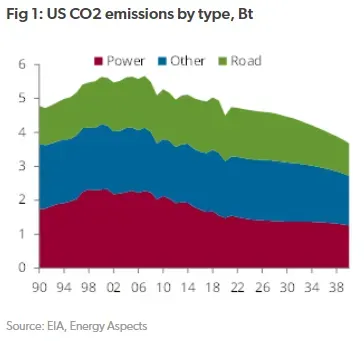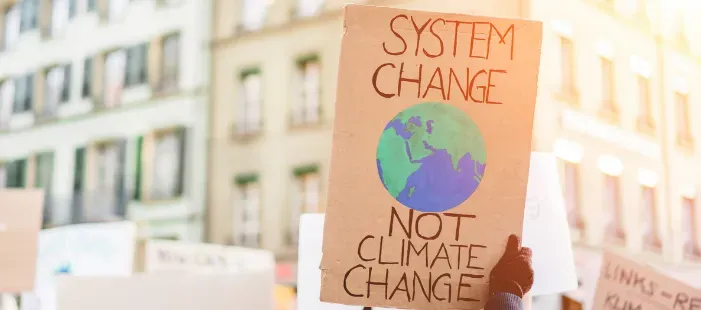Decarbonising the US Power sector
State level effort not enough to achieve national climate goals
US carbon dioxide emissions will decline by only one-fifth by 2030 unless significant action is taken. This rate is far below the US’ latest pledge to cut greenhouse gas emissions by up to 52% by 2030, which the country set after rejoining the Paris Agreement. Reductions continue to be led by efforts at the state level, and these are poised to expand further this year, but we are sceptical on whether they will be sufficient to push the US to its stated goals.
On 22 April, US President Joe Biden announced ambitious country-level climate goals as various countries review and enhance their climate change commitments prior to the UN Climate Change Conference (COP26) in November, committing to innovation in renewable energy sources and investment in clean energy technology. The targets set out in the nationally determined contribution will align with the Biden administration's goal to decarbonise the US’s electricity sector by 2035.
US Power sector: Reduction estimates
Reductions can seem steeper compared to 2005, which was one of the five highest years of power sector emissions in the past 30 and top two for a total output of greenhouse gases (see Figure 1) . Emissions have remained lower since then, and thus reductions from the 2005 level are not as onerous as those from 1990 (the Kyoto Protocol baseline) or even from more recent years such as 2019.

Our analysis indicates that the US will reach a 40% reduction in power sector emissions by 2030 and a 21% drop in overall energy-related emissions below the 2005 baseline. We base our reductions forecasts on our proprietary models that track expected continued coal plant retirements, renewables growth and the quickening pace of electric vehicle adoption.
These estimates are below the rates that the US seeks to achieve, causing us to question whether the country can meet the aggressive climate targets it has set out— especially its ambitious target to fully decarbonise the US power grid by 2035.
The current state of affairs
More than a dozen US states either have implemented or are enacting CO2 limits. The 11 current members of the Regional Greenhouse Gas Initiative (RGGI) have pledged to cut power sector emissions further after already having seen reductions of more than 43% since 2005.
The possible addition of Pennsylvania, Illinois and North Carolina to RGGI would push the programme to cover more than 38% of US power consumption. However, those states' share of total US emissions is currently below their electricity usage as coal plant retirements over the past decade along with increased renewables penetration have already propelled them into greener territory.
However, New York and California continue to be at the forefront of state-level efforts to reduce emissions. New York adopted one of the country's most aggressive climate bills in 2019 with the signing of the Climate Leadership and Community Protection Act (CLCPA), which calls for a 40% cut in emissions by 2030. Additionally, California extended its initial targets to achieve a 40% reduction from 1990 levels by 2030, which would amount to a 44% drop from 2005 levels.
Our analysis shows that most of the near-term emissions limits will continue to be driven by states in the US Northeast as well as another 10 or so spread throughout the country that have either statutory or executive long-term renewables and carbon-neutrality targets. Reductions by these states alone will be insufficient to meet overall US goals. Given the tight balance of power in the US Congress, implementing more aggressive climate goals may require even more intense policymaking at the state level.













